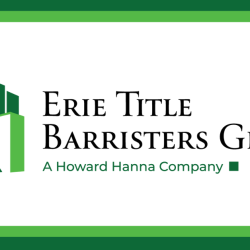You know when you meet up with friends and some members of the group are really close and basically have their own separate language? You feel left out, right? Don’t let that same uncomfortable feeling creep in when you go to buy a home. Know the ins and outs of the mortgage lingo with our help.
ARM
An adjustable-rate mortgage has interest rates that fluctuate based on market conditions. The good news with an ARM is that the initial fixed interest rate is typically lower than a comparable fixed-rate mortgage. The less-than-favorable news here is the fact that the fixed interest rate does expire after a certain amount of time and is then affected by the market— keep in mind this can be good news or bad depending on what’s happening in the economy.
PMI
If you’re buying a home with less than 20 percent down, PMI is an acronym that you’ll be well acquainted with by the time you arrive at the closing table. PMI stands for Private Mortgage Insurance and essentially exists to protect the lender if you were to default on the loan. Typically, the PMI payment is lumped into your monthly mortgage payment. The important takeaway to remember is that even though the word insurance is in the name, PMI does not exist to protect you— it exists to protect the lender only.
APR
Annual percentage rate is the annual rate charged for borrowing money. Don’t confuse APR with the term interest rate— APR includes the nominal interest rate and any other costs or fees involved in procuring the loan (think closing costs and lender fees). Thus, the interest rate will likely be lower than the APR.
Discount points
You can pre-pay interest that accrues on your loan by way of purchasing discount points. Discount points are good for you long-term because you’re essentially lowering your monthly mortgage payment. Typically, each point will run you about one percent of the total loan amount and will generally lower the loan’s interest rate by ⅛ to ¼ of a percent. Most people don’t realize that discount points are tax deductible, so make sure to take advantage of that much-needed break if you’re electing to buy discount points.
Amortization
When you sign your name on the dotted line you won’t leave the closing table without your amortization schedule. Think of your amortization schedule like a series of repayment reminders throughout the course of your loan payback period. You’ll notice that during the beginning of your repayment journey, most of your monthly payment goes toward interest, but this lessens each month as you work to pay down your loan.
Escrow
An escrow account is used by the lender to hold money set aside by the borrower to pay for monthly real estate taxes and homeowners insurance. In typical cases, lenders require borrowers to set aside a few months of these taxes, as well as a year’s worth of homeowners insurance payments to be held in an escrow account.
Title insurance
Title insurance ensures you have ownership over your property. You might wonder why this is even necessary, but say one day you get a call from the IRS claiming property taxes hadn’t been paid in years prior— title insurance protects you from having to fork over cash for the previous owner’s responsibilities. Most likely, if you’re financing the purchase of your home the lender will require you to take out title insurance. Keep in mind, that policy will only cover the outstanding amount of the loan at the time the claim is made, so it’s a good idea to purchase an owner’s policy, too.









